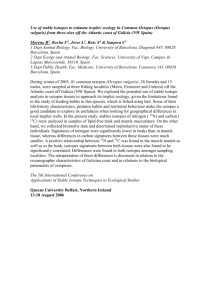Octopus
advertisement
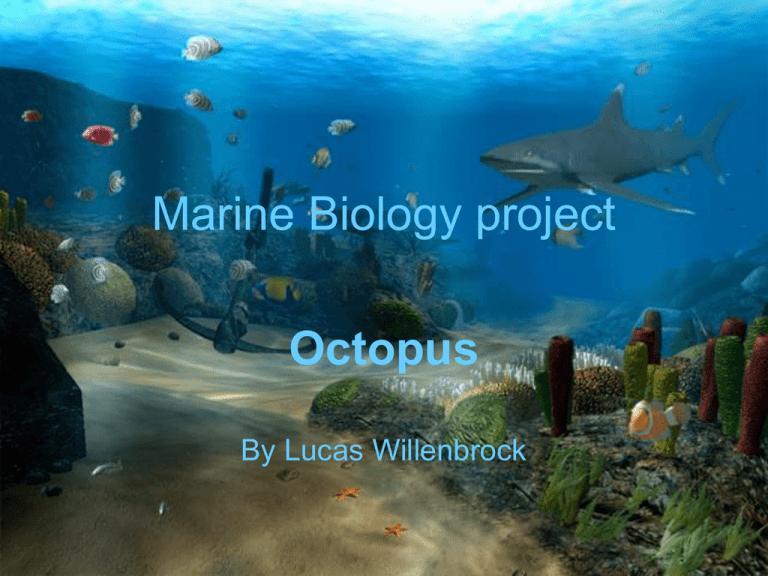
Marine Biology project Octopus By Lucas Willenbrock Octopus • Octopus’s belong to the class Cephalopoda which includes squid and cuttlefish • It belongs to the order Octopoda which includes all octopi • There are about 300 known species of octopi Physical Characteristics • All species of octopus have eight arms unlike squid and cuttlefish which have ten • They are invertebrates • All species have a beak not unlike a parrots that functions as a mouth • They come in a variety of sizes and colors and some have the ability to change color Habitat • Octopus’s live on the sea floor • They range from shallow coastal waters to the deepest parts of the ocean Food • Octopuses eat a wide range of sea creatures from crabs to clams to many kinds of fish • They have few natural predators but are sometimes eaten by sharks , rays and moray eels biology • Octopuses have a highly developed nervous system • They are also regarded as one of the most intelligent of all sea creatures for their uncanny problem solving skills • They have the ability to open jars and can be trained in similar ways to a dolphin or dog Reproduction and life cycle • • • • Octopuses have a short life span Generally living from only a year or two They reproduce sexually Most octopuses die a few weeks after mating • This is due to a gland that secretes a “death” hormone to ensure a geneticallypreprogrammed death Facts • All species have the ability to secret a smelly ink like fluid that can act as a distraction or defense mechanism • Octopuses have been known to hid inside clam shells for defense • They have some of the largest eyes of any sea creature and possess excellent vision • They are able to propel themselves though the water by squeezing water out of an opening called a siphon • An octopus using a shell an octopus propelling itself using a water jet • An octopus fanning itself out in defense
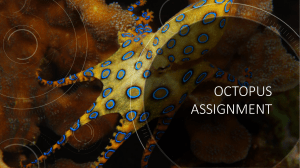
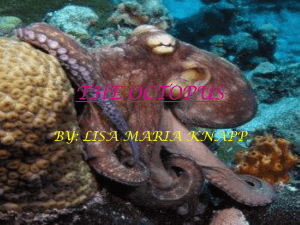
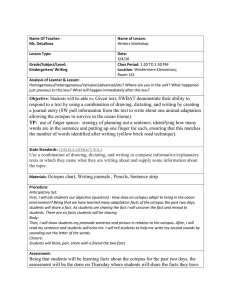

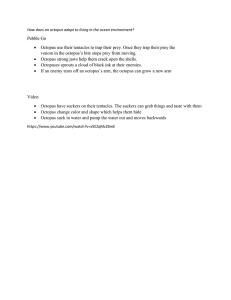
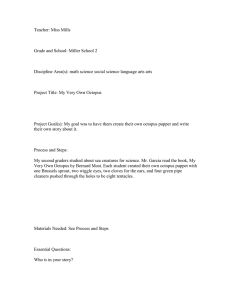

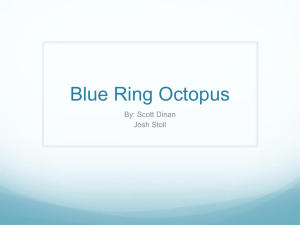

![WIA poetry exercise[1]](http://s3.studylib.net/store/data/006641954_1-9e009b6b11d30a476e3c12c4ba5f8bb1-300x300.png)
